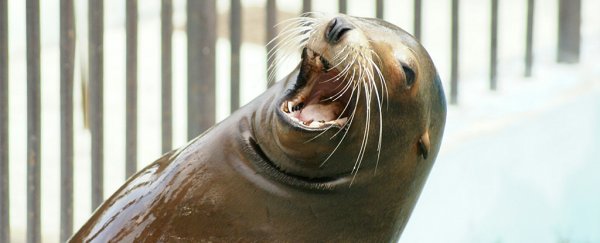When considering matters of intelligence among animals, it's not irrational to assume size matters. Bigger bodies allow for bigger brains, after all, and bigger brains provide the potential real estate for developing better problem-solving skills.
Yet neurons don't work for free, a fact that constrains how nervous systems might evolve in size and complexity in the first place. Just because skulls expand, doesn't mean nature will automatically fill them with grey matter.
Strange as it seems, we know very little about the evolutionary forces responsible for diversifying brain size across the backboned part of the animal kingdom.
So an international team of researchers undertook a huge study on the largest fossil and extant dataset yet assembled, measuring the spaces once occupying the skulls of more than 1,400 species, living and extinct.
Comparing information on body sizes with endocranial data, the team could hunt for consistent patterns and sequences in growth in development that nudges an animal up the IQ ladder.
That search wasn't as straightforward as we might have initially assumed.
"At first sight, the importance of taking the evolutionary trajectory of body size into account may seem unimportant," says evolutionary biologist Jeroen Smaers from Stony Brook University.
"After all, many of the big-brained mammals such as elephants, dolphins, and great apes also have a high brain-to-body size. But this is not always the case."
One animal that bucks this trend is the California sea lion (Zalophus californianus).
These marine big-boys can grow more than 2 meters (nearly 7 feet) in length and weigh around 100 kilograms (220 pounds), putting them roughly in the same ballpark as an adult human. Yet their brain size is more akin to that of a chimpanzee's.
That doesn't make them stupid by any stretch of the imagination. Quite the opposite, sea lions are quick learners that can adapt cognitively to human interactions with ease.
Polar bears (Ursus maritimus), on the other hand, have a relatively similar mean body mass, with a brain that's two times bigger than the sea lion's. Although nobody has yet dared to challenge one of these voracious predators to a round of trivia, it's probably fair to judge from a safe distance that they're not twice as smart.
Indeed, looking from a neuroanatomical perspective, sea lions have 3.6 times more volume devoted to their smarts, relative to basic autonomic and sensory functions.
If Californian sea lions are as big as humans, why aren't they as smart as us too? Putting it simply, evolution simply gambled on building them a bigger body and left a slightly smaller brain to make do with the energy it had left.
"We've overturned a long-standing dogma that relative brain size can be equivocated with intelligence," says biologist Kamran Safi, a research scientist at the Max Planck Institute of Animal Behaviour.
"Sometimes, relatively big brains can be the end result of a gradual decrease in body size to suit a new habitat or way of moving – in other words, nothing to do with intelligence at all."
Comparing brain and body sizes preserved in the fossil record also allowed the team to gain insights into historical changes set against a shifting ecological backdrop.
In the wake of the dinosaur-killing impact that ended the Cretaceous, a bunch of tiny mammals such as rats, shrews, and bats experienced significant changes in their brain-body scale – as they got bigger, so did their brains.
Similarly, with the climate cooling in the Late Paleogene 30 million years later, mammals including seals, bears, and our own ancestors took advantage of empty niches to fuel up and build body mass and brain size.
"A big surprise was that much of the variation in relative brain size of mammals that live today can be explained by changes that their ancestral lineages underwent following these cataclysmic events," says Smaers.
None of this is to say generalizations about bigger brains and increased cognitive capacity are completely bunk. It's a fair rule of thumb.
But even our own mighty meat computers bloomed in size and complexity over a period long enough to make it unlikely any one mental trick was driving their growth. Among individuals, bigger doesn't necessarily mean brighter, either.
When it comes to the intelligence of other animals, size is just one thing that matters. Except, of course, when it doesn't.
This research was published in Science Advances.
